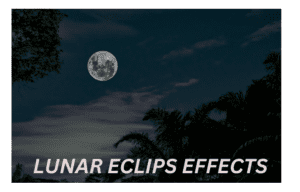Lunar Eclipse 2024: Embrace the Celestial Mastery of Shadows and Light
Get ready for Monday, March 25, 2024, when Earth will line up with the Sun and Moon to see as lunar eclipse. This will result in our lunar neighbor being shaded by our planet’s shadow.
The occasion falls on the same day as the Festival of Colors, a long-standing, Hindu celebration that heralds the arrival of spring and the promise of fresh starts. In locations six hours or more behind GMT (that is, farther west than Chicago), the eclipse will start the previous evening, on March 24, 2024.
When will the lunar eclipse 2024 occur?

The penumbral lunar eclipse will occur 24-25 March 2024.
For observers in the United Kingdom, the Moon will be below the horizon when the eclipse reaches its maximum extent. The eclipse is scheduled to happen in the hours before dawn. As the Sun rises from Bristol on March 25 at 6 a.m. GMT, the eclipse will take place in the early morning sky, just before Moonset.The eclipse will peak at approximately 6:03 am GMT, while the full Moon is still visible above the horizon. At 7:12 a.m.
Due to the maximum eclipse phase and the low Moon on the horizon, the Moon will appear faint before it sets at 6:11 a.m. GMT. So it can vanish from view
Where can I see the moon eclipse?
The whole United States, South America, Canada, the United Kingdom, a large portion of Europe, a large portion of Africa, North and East Asia, western Australia, the Arctic, and Antarctica will be covered by the moon eclipse on March 25.The eclipse will start on March 24 and be visible until sunrise for locations further west than Chicago, Illinois.

A lunar eclipse is caused by what?
A lunar eclipse occurs when Earth passes in front of the Sun, casting Earth’s shadow on the Moon. We can see the Moon because of reflected sunlight, which is prevented from reflecting off the Moon’s surface during a lunar eclipse. A lunar eclipse goes through several phases. The first phase of a complete lunar eclipse is when the Moon enters the penumbra, or diffuse outer region of the Earth’s shadow. Subsequently, it will enter the deeper umbra, travel back into the penumbra on the opposite side, and ultimately emerge completely from the shadows. The Moon will stay in the penumbral shadow and not pass into the central umbra during the lunar eclipse on March 24–25, 2024.
The Moon will be in which constellation?
On March 24, 2024, a penumbral eclipse will occur while the Moon is in the Virgo constellation. It will seem farther west and nearly level with the constellation’s brightest object, Spica.
Is the Moon going to turn red?
Why do It come in pairs?
When is the Next Such Incidents?
The next time will occur on September 18, 2024, a partial eclipse, following the 25 March 2024 eclipse. The next total lunar eclipse is not too far off—it will happen on March 14, 2025, which is around one year from now.
Similar to buses, there will be three complete lunar eclipses in a row on September 7, 2025, and March 3, 2026.
ASSUMED LIST OF SUCH INCIDENTS IN THE NEAR FUTURE
A 25 March 2024: Penumbral
B.18 September 2024: Partial
C.14 March 2025: Total
D. 7 September 2025: Total
E. 3 March 2026: Total
F. 28 August 2026: Partial
G. 20 February 2027: Penumbral
H. 8 July 2027: Penumbral
I. 17 August 2027: Penumbral
J. 12 January 2028: Partial
K. July 2028: Partial
L. 31 December 2028: Total
M. 26 June 2029: Total
N. December 2029: Total
